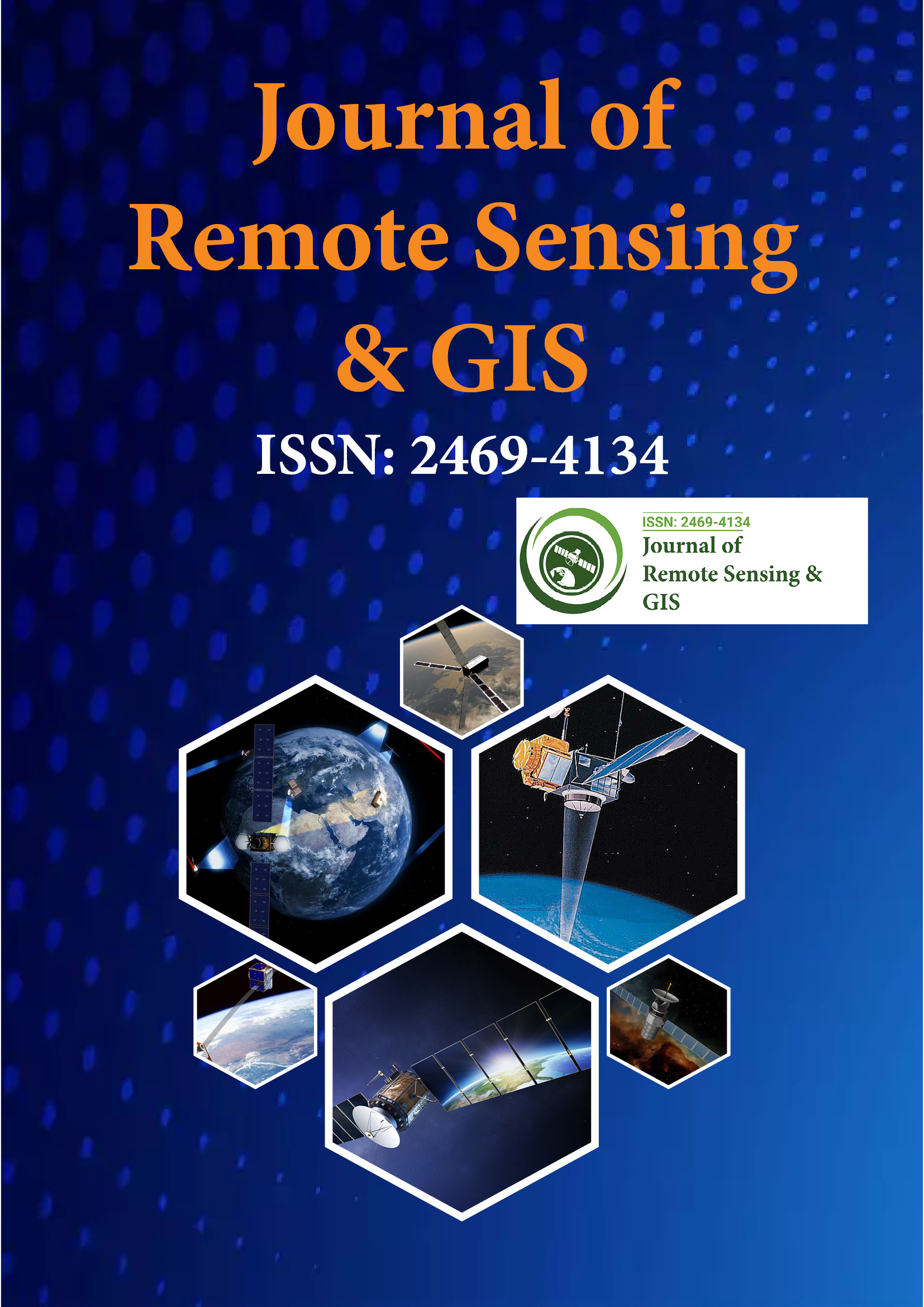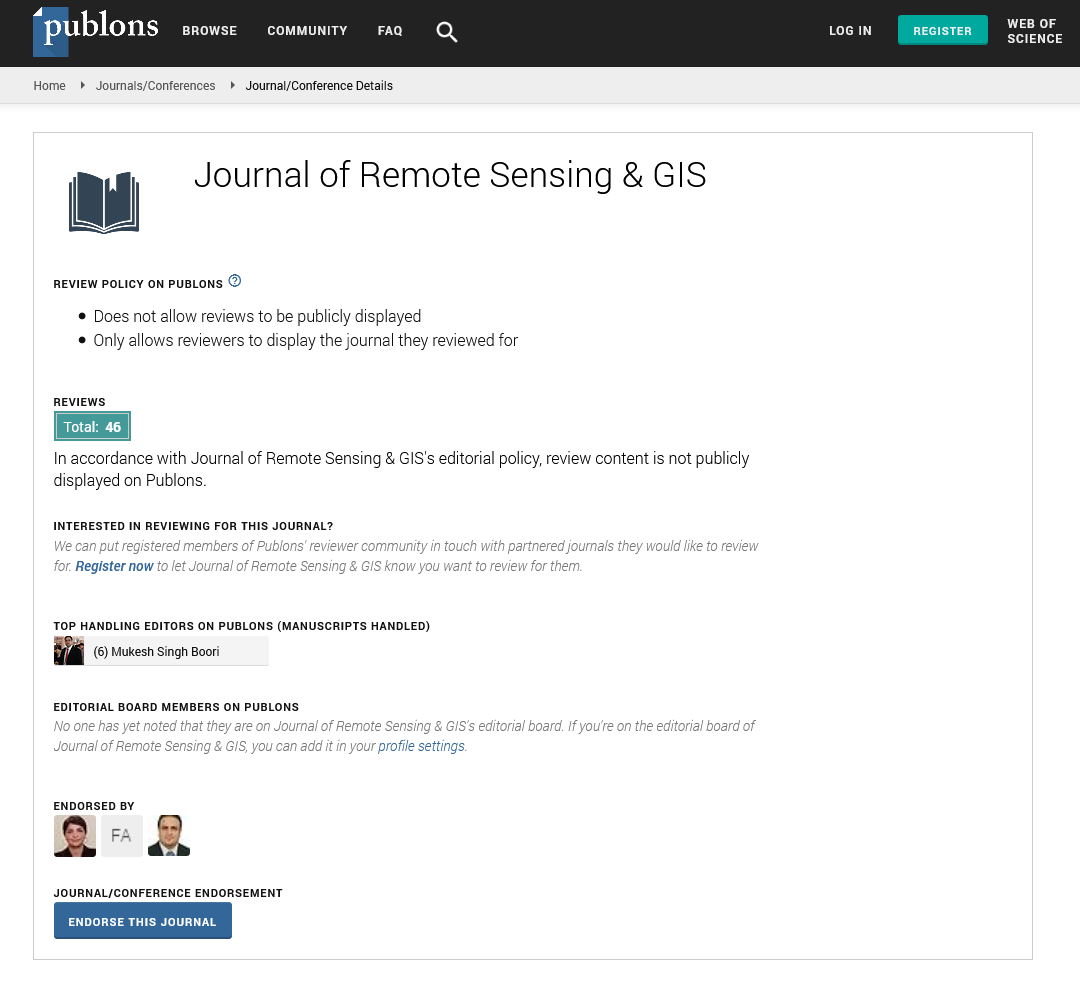Indexed In
- Open J Gate
- RefSeek
- Hamdard University
- EBSCO A-Z
- OCLC- WorldCat
- Publons
- International Scientific Indexing
- Euro Pub
- Google Scholar
Useful Links
Share This Page
Journal Flyer

Open Access Journals
- Agri and Aquaculture
- Biochemistry
- Bioinformatics & Systems Biology
- Business & Management
- Chemistry
- Clinical Sciences
- Engineering
- Food & Nutrition
- General Science
- Genetics & Molecular Biology
- Immunology & Microbiology
- Medical Sciences
- Neuroscience & Psychology
- Nursing & Health Care
- Pharmaceutical Sciences
Commentary Article - (2021) Volume 10, Issue 11
Process of Reverse Geocoding
Maneender Singh*Published: 23-Nov-2021
Introduction
Geospatial innovations and even Internet applications, for example, Google Earth are currently much of the time utilized in both social and natural sciences in the quest for spatial examples Geospatial show on the web, like Google Earth, not just gives a way to pitch the significance of "geology", yet additionally goes about as a spread apparatus for spatial outcomes. This democratization of spatial knowledge can drastically affect networks without the specialized capacity, equipment or programming to utilize a Geographic Information System (GIS).
Reverse Geocoding or Switch geocoding is the way toward changing over an area as depicted by geographic directions to a comprehensible location or specified location that is pointed. It is the inverse to advance geocoding, subsequently the term switch. Invert geocoding identifies the ID of close by road locations, places, as well as areal developments like areas, province, state, or country. Joined with geocoding and directing administrations, switch geocoding is a basic part of versatile area based administrations and Enhanced 911 to change a facilitate acquired by GPS over to a lucid road address which is more obvious by the end client, however not really with a superior exactness.
Invert geocoding can be completed methodically by administrations which measure facilitate comparably to the geocoding cycle. For instance, when a GPS organize is entered the road address is added from a range given out to the street section in a reference data set to that the fact is closest to. In the event that the client gives arrange close to the midpoint of a fragment that beginnings with address 1 and closes to 100, the returned road address will be some place almost 50. This way to deal with turn around geocoding doesn't return real locations, simply measures of what should be there reliant upon the destined to be reached. Then again, arranges for switch geocoding can likewise be chosen so that the client should release the fear, or separated from static guides by geo-referring to them in a GIS with predefined spatial layers to decide the directions of a showed point.
Public converse geocoding administrations are opening up through APIs and other web benefits just as cell phone applications. These administrations require manual contribution of a facilitate, catch from a localisation, instrument for the most part GPS, yet in addition cell tower signs or Wi-Fi follows, or determination of a point on an intelligent guide; to look into a road address or adjoining places. Instances of these administrations incorporate the GeoNames switch geocoding web administration which has instruments to recognize closest road address, place names, Wikipedia articles, country, area regions, neighbourhoods, and other area information from an organize. Google has additionally distributed an opposite geocoding API which can be adjusted for online converse geocoding apparatuses, which utilizes a similar road reference layer as Google maps. The other famous opposite geocoding administrations use different web indexes dependent on OpenStreetMap information.
Geocoding and opposite geocoding have raised potential protection concerns, particularly with respect to the capacity to figure out road addresses from distributed static guides. By digitizing the distributed guides it is easy to geo-reference them by overlaying with other spatial layers and afterward separate point areas which can be utilized to distinguish people or converse geocoded to get a road address of the person. This has possible division of complexity to decide areas for patients or study members from maps distributed in clinical writing just as conceivably delicate data distributed in other editorial sources.
The uses of this raised concerns with respect to the expected utilization of geo-referring to and switch geocoding of distributed guides to clarify delicate or private data on planned people. Rules for the showcase and distribution of possibly sensitive information are inconsistent and no uniform strategy has been recognized. The utilization of obscuring calculations which shift the area of planned focuses has been proposed as an answer. Likewise, where direct reference to the geology of the space planned isn't needed, it could be feasible to utilize theoretical space on which to show spatial examples.
Conclusion
Instances of other point maps showing wellbeing information extracted from the scholar writing are introduced where a comparable re-designing methodology may make worry with respective abusing secrecy. More examination is additionally required into the metropolitan design which plays in the precision of re-designing. We propose that wellbeing and spatial researchers ought to be proactive and recommend a progression of point level spatial secrecy rules before legislative choices are made which might be traditional toward the danger of uncovering classified data, along these lines forcing drastic cutoff points on research utilizing a GIS.

